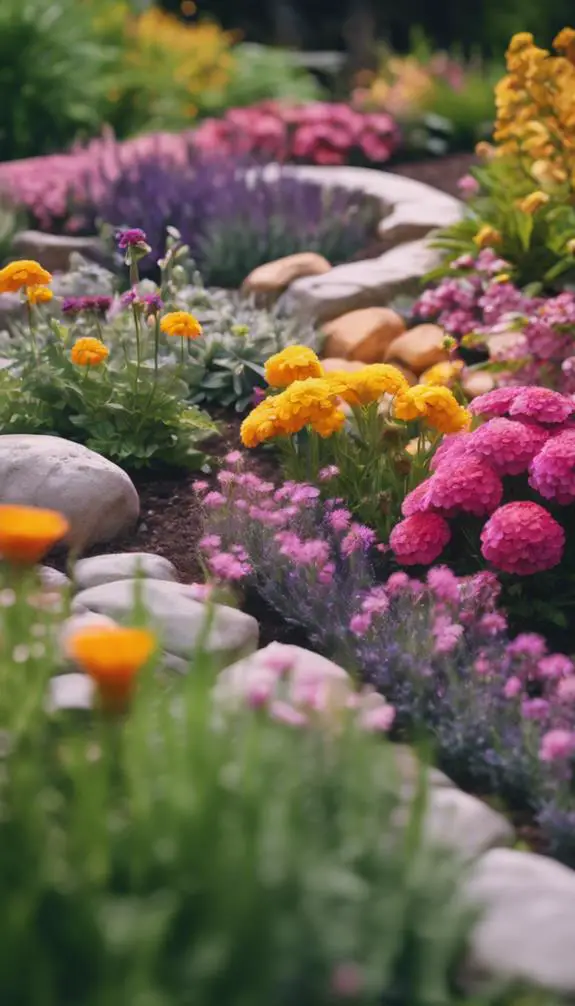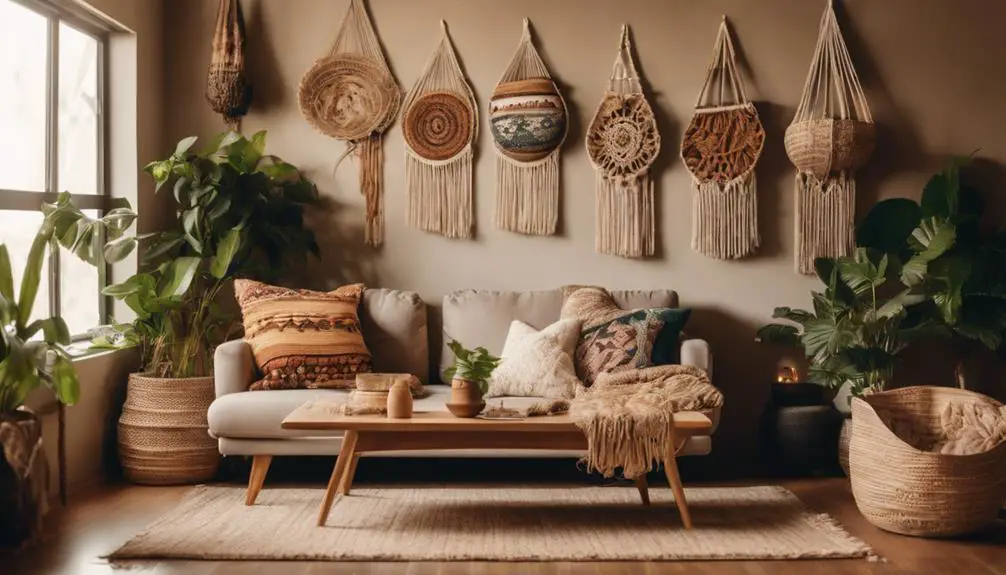As you step into your outdoor space, you can't help but envision a serene oasis that reflects your personal style. You're not alone in this desire – a well-designed garden bed can elevate your entire property. From modern raised beds to whimsical cottage gardens, the possibilities are endless. But where do you start? With so many styles and themes to choose from, it's easy to get overwhelmed. That's why it's crucial to prioritize and focus on the elements that matter most to you. What's your dream garden look like, and how can you bring it to life?
Modern Raised Garden Beds

Incorporating sleek lines, minimalist materials, and a focus on functionality, modern raised garden beds bring a touch of sophistication to outdoor spaces while providing ample opportunities for creative planting arrangements.
You'll appreciate the clean lines and urban chic aesthetic that these beds bring to your garden.
By opting for materials like steel, wood, or recycled plastic, you can create a modern look that's both durable and eco-friendly.
One of the key benefits of modern raised garden beds is their versatility.
You can customize the size, shape, and layout to fit your specific needs and space constraints.
Plus, the elevated design makes it easier to plant, weed, and harvest your crops, reducing strain on your back and knees.
Whether you're a seasoned gardener or just starting out, modern raised garden beds offer a sleek and practical solution for growing your favorite fruits, vegetables, and flowers.
With their focus on functionality and style, they're the perfect addition to any modern outdoor space.
Whimsical Cottage Garden Designs
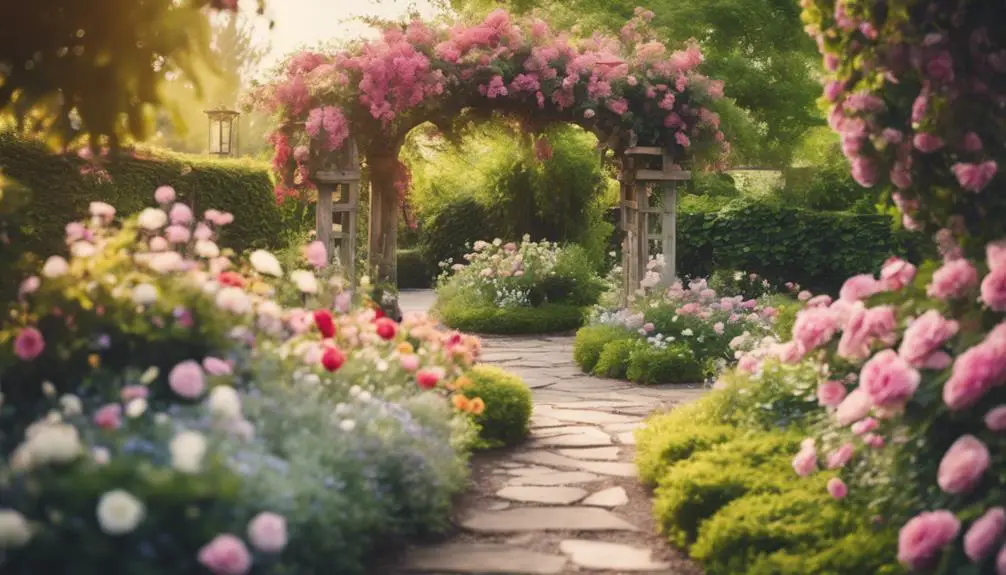
As you step away from the sleek, modern aesthetic, you'll find yourself enchanted by whimsical cottage garden designs that transport you to a charming, rustic world.
These designs often incorporate curved paths, meandering borders, and lush plantings that evoke a sense of romance and mystery.
To create a whimsical cottage garden, consider incorporating miniature features like fairy gardens, complete with tiny furniture and accessories.
These hidden sanctuaries can be tucked away in corners or beneath shrubs, inviting exploration and discovery.
You can also design secret sanctuaries by incorporating hidden nooks and seating areas, sheltered by trellises, arbors, or pergolas.
When selecting plants, opt for a mix of flowering perennials, shrubs, and trees that provide texture, color, and fragrance.
Incorporate a variety of bloom times to guarantee year-round interest.
Consider using natural materials like stone, wood, and brick to create rustic, weathered-looking pathways and borders.
Small Space Garden Solutions
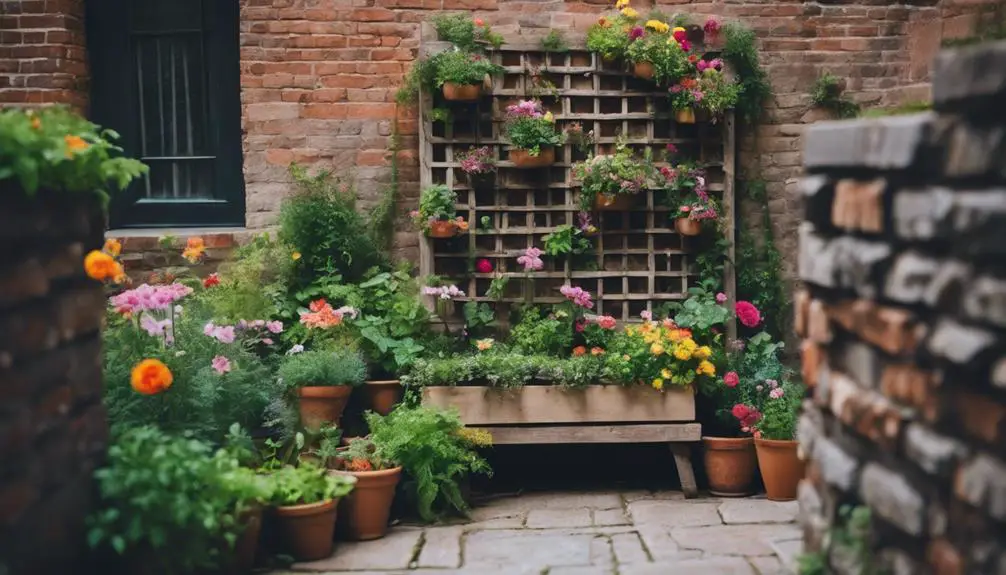
You'll often find that cleverly designed small space gardens can thrive in even the most compact areas, such as balconies, patios, or rooftops.
To maximize these tiny plots, you'll need to get creative with space savers and compact planters. Consider vertical gardening solutions, like trellises or living walls, to make the most of your walls and fences.
Hanging baskets and window boxes are also great options for adding greenery to tight spaces. When choosing planters, look for compact designs with built-in irrigation systems or self-watering features to minimize maintenance.
You can also use tiered planters or stacked pots to add depth and visual interest to your small space garden. Don't forget to select plants that are specifically bred for compact growth or have a dwarf variety, such as patio tomatoes or miniature roses.
Edible Garden Bed Ideas
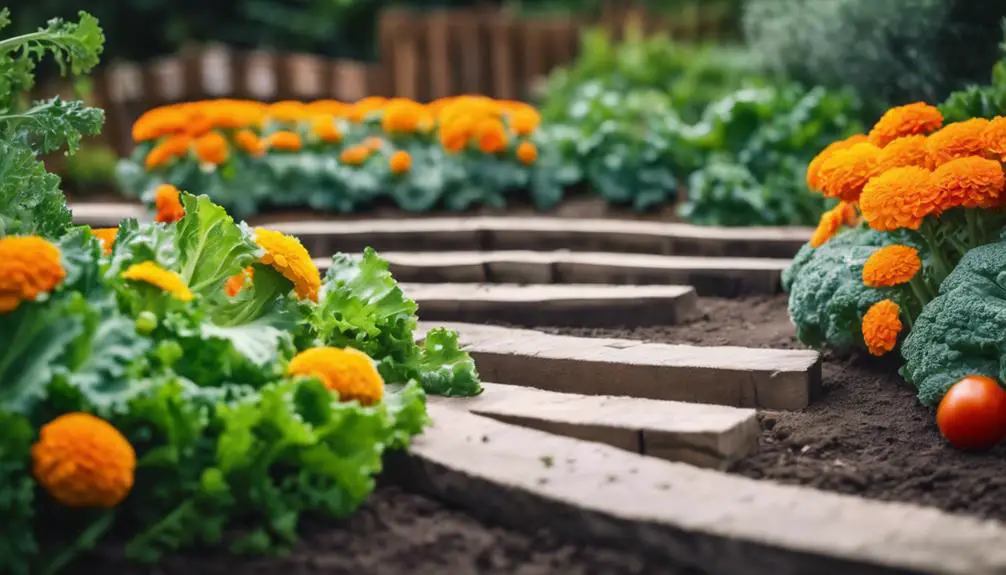
By designing your edible garden beds with intention, you can create a visually appealing and productive space that showcases your favorite fruits, vegetables, and herbs.
Consider a themed bed, such as a salsa garden, where you can grow a variety of tomatoes, peppers, onions, and fresh herbs like cilantro and parsley. Alternatively, create a rainbow-colored bed featuring a mix of vegetable varieties, including vibrant orange carrots, leafy green kale, and deep red beets.
When planning your edible garden bed, think about the mature size of each plant and leave enough space for proper air circulation and sunlight penetration.
Use a trellis or cage to support vining plants like peas, beans, or tomatoes, and incorporate companion planting to deter pests and attract beneficial insects.
Don't forget to incorporate a pathway, either with mulch, stone, or wood chips, to allow for easy access and maintenance.
With a little creativity and planning, your edible garden bed will become a beautiful and productive oasis in your backyard.
Flower Filled Border Gardens
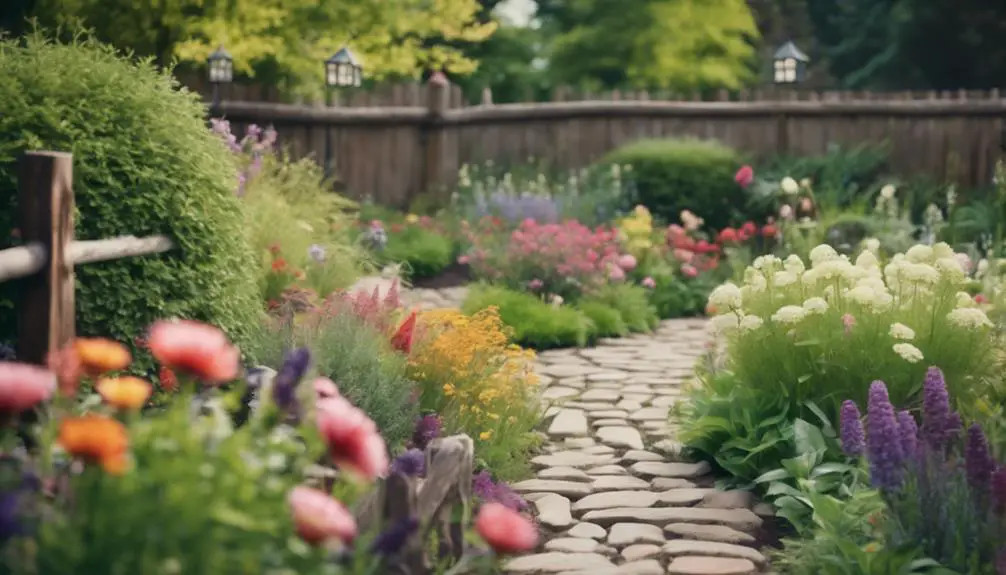
Create a beautiful Flower Filled Border Garden by strategically placing a mix of annuals and perennials along the perimeter of your edible garden bed, where they'll not only add visual appeal but also help to conceal the edges of the bed and create a sense of depth.
To achieve a visually stunning border, you'll want to weigh your Flower Choices carefully. Opt for a mix of blooms with varying heights, textures, and colors to add depth and visual interest.
For example, pair tall, statuesque perennials like delphiniums or hollyhocks with lower-growing annuals like marigolds or petunias.
Don't forget to incorporate a variety of Border Textures, such as soft, velvety leaves or prickly, succulent stems, to add another layer of visual appeal.
Succulent Garden Bed Designs
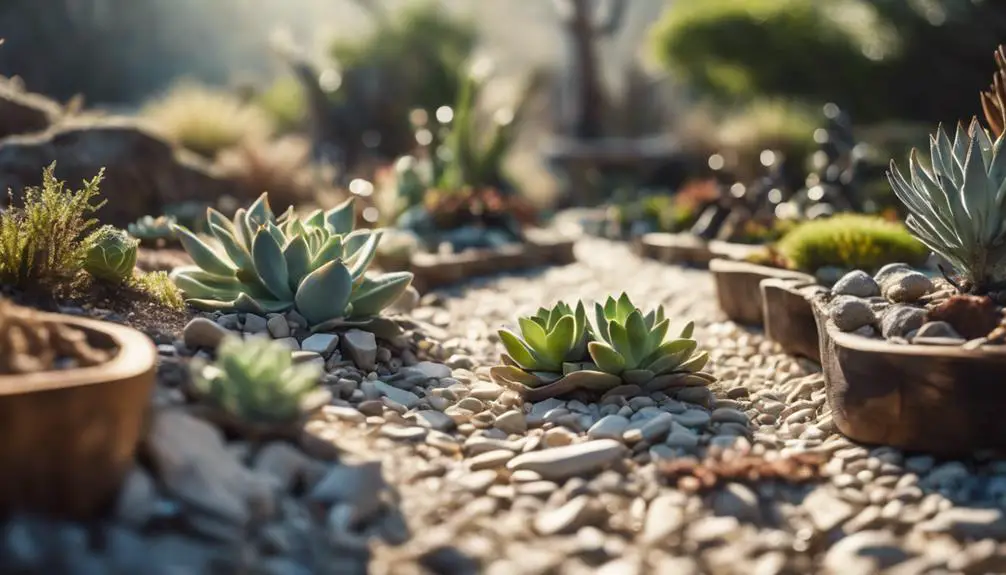
When designing a succulent garden bed, you'll want to ponder the arrangement of your plants, as varying heights and textures can create visual interest.
You'll also need to guarantee your soil meets the specific requirements of your succulents, as they thrive in well-draining mixes.
Succulent Arrangement Tips
To craft visually stunning succulent arrangements, start by selecting a variety of species with complementary textures, colors, and forms to guarantee a dynamic, layered look in your succulent garden bed design.
Consider combining species with varying heights, such as tall, upright succulents like aloe or agave, with shorter, spreading varieties like echeveria or crassula. This contrast will create visual interest and depth in your arrangement.
When arranging your succulents, remember to leave enough space for proper air circulation and succulent care.
This will prevent moisture from becoming trapped and reduce the risk of root rot. You can also use succulent propagation to create new plants and add them to your arrangement, filling in any gaps and creating a fuller, more lush look.
Experiment with different container shapes and sizes to add an extra layer of visual interest to your design.
Succulent Soil Requirements
With your succulent arrangement in place, you'll want to guarantee the soil it's planted in provides the right conditions for peak growth and health.
Succulents thrive in well-draining soil with a slightly acidic pH, ranging from 6.0 to 7.0. A mix specifically designed for cacti and succulents will typically meet these requirements. However, if you're creating your own blend, incorporate ingredients like perlite, vermiculite, or sand to enhance drainage and aeration.
Soil aeration is vital, as it allows roots to breathe and absorb essential nutrients. You can improve aeration by adding a small amount of organic matter, such as peat moss or compost, to the soil.
This will also help retain moisture without waterlogging the soil. When selecting a potting mix, look for products labeled as 'well-draining' or 'fast-drying' to confirm your succulents receive the right amount of moisture.
Succulent Color Schemes
You can create visually striking succulent garden beds by selecting a cohesive color scheme that showcases the diverse hues and textures of these low-maintenance plants.
To achieve a cohesive look, consider the natural environments that succulents inhabit, such as desert landscapes. Draw inspiration from the earthy tones of sandy dunes, rocky outcroppings, and vibrant cacti.
Choose a dominant color, like a soft blue-green or warm terracotta, and balance it with complementary shades. For instance, pair bold Echeveria with delicate Sedum, or contrast bright Aloe with muted Crassula.
Consider creating succulent patterns by grouping plants with similar colors or textures together, or by alternating between light and dark shades. You can also add visual interest by incorporating decorative elements, like pebbles, rocks, or driftwood, in harmonious hues.
DIY Garden Bed Projects

As you venture into DIY garden bed projects, you'll uncover a world of creative possibilities.
You'll soon be designing and building your own raised bed creations, transforming discarded materials into upcycled planters, and crafting elegant wooden frame designs that showcase your garden's beauty.
Raised Bed Creations
Create raised bed creations that showcase your personal style and garden flair by repurposing materials like reclaimed wood, brick, or stone to craft unique DIY garden bed projects.
You can design bed frames with varying garden heights to accommodate different plants and create visually appealing layers in your garden. Consider building a tiered raised bed with multiple levels, each with its own unique character. This won't only add depth to your garden but also create a sense of movement and flow.
When selecting materials, think beyond traditional wood and explore options like metal, composite, or recycled plastic. These materials can add a modern twist to your raised bed creations and provide durability and low maintenance.
Pay attention to the scale and proportion of your bed frames to guarantee they complement the surrounding landscape. By experimenting with different shapes, sizes, and materials, you can create a one-of-a-kind raised bed that reflects your personal style and garden aesthetic.
Upcycled Planters Ideas
By repurposing unexpected containers like old pallets, boots, or even kitchen sinks, you can craft unique upcycled planters that add a touch of whimsy and personality to your DIY garden bed projects.
Consider transforming old boots into quirky planters for small herbs or succulents. Simply drill a few holes in the bottom for drainage, add a layer of potting soil, and plant your chosen greenery.
For a more rustic look, you can upcycle plastic barrels into large planters for shrubs or flowers. Just be sure to clean and disinfect the barrels before use. You can also get creative with the design by adding a trellis or a decorative lid.
When selecting containers, think about the style and theme of your garden bed. For instance, vintage boots might fit perfectly in a country-inspired garden, while sleek plastic barrels could complement a modern landscape.
With a little creativity, you can turn discarded items into functional and visually appealing upcycled planters that elevate your DIY garden bed projects.
Wooden Frame Designs
You can build wooden frame designs that define your DIY garden bed projects with clean lines, raised borders, and a rustic charm by using reclaimed or pressure-treated lumber.
This frame style adds a touch of sophistication to your garden, making it a focal point in your outdoor space.
To create a unique look, you can mix and match different types of wood, such as cedar, cypress, or redwood, to create a distinctive wooden accent.
When selecting a frame style, consider the overall aesthetic you want to achieve.
A simple rectangular frame provides a clean and modern look, while a curved or angled frame adds a touch of whimsy.
You can also add decorative elements, such as wooden brackets or trellises, to enhance the design.
Additionally, consider the height and width of your frame, as well as the type of plants you'll be growing, to guarantee your DIY garden bed is both functional and visually appealing.
With a little creativity and some basic carpentry skills, you can create a stunning wooden frame design that showcases your garden's beauty.
Shade Garden Bed Ideas
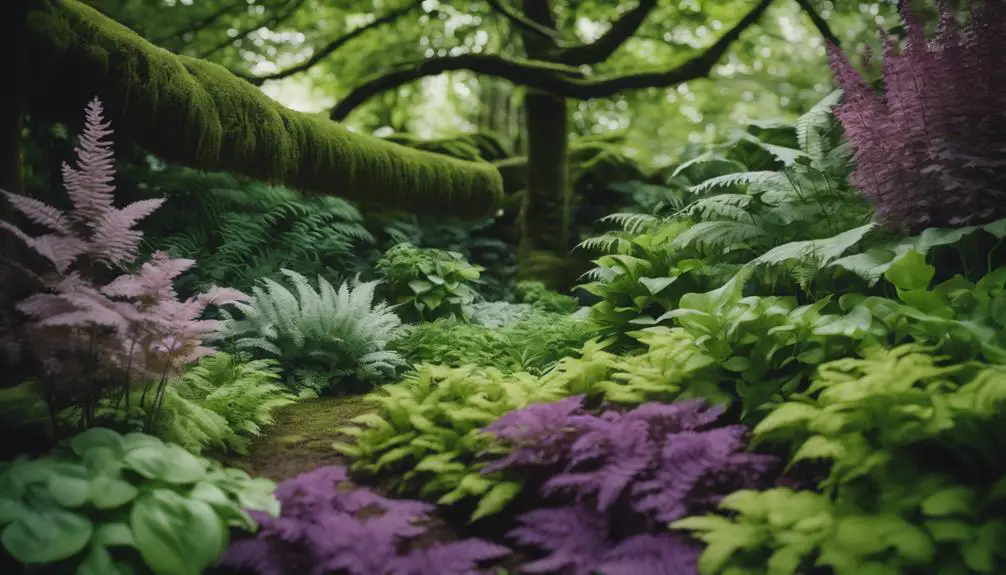
As you design your shade garden bed, remember that four shade-tolerant plants, like ferns, astilbe, and hostas, thrive in garden beds receiving less than six hours of direct sunlight daily.
To create a visually appealing shade garden, focus on incorporating shade perennials that mimic the natural forest floor. Consider layering plants of varying heights and textures to create depth and visual interest.
Start by planting taller shade perennials like ferns and astilbe towards the back of the bed, and then add lower-growing plants like hostas and creeping thyme towards the front.
This will create a natural, tiered effect that echoes the forest floor. Don't be afraid to incorporate natural elements like rocks, logs, or moss to add texture and visual interest to your shade garden.
Coastal Themed Garden Beds

When creating a coastal-themed garden bed, you'll want to incorporate elements that evoke the feeling of the ocean.
You can start by designing seashell-accented borders that add a touch of the beach to your garden.
Next, consider incorporating driftwood decorative features and selecting ocean-inspired plant choices that will bring the coastal vibe to life.
Seashell Accented Borders
What better way to evoke the essence of a coastal retreat than with seashell accented borders, where delicate shells in soft hues of ivory and peach adorn the periphery of your garden bed?
You'll instantly transport yourself to a beachy paradise, surrounded by the soothing sounds of waves and the warmth of the sun.
To achieve this look, start by selecting a mix of shells in varying shapes and sizes. You can opt for a monochromatic scheme or combine shells in different hues to create a visually appealing contrast.
Once you've gathered your materials, simply arrange the shells along the border of your garden bed, leaving a small gap between each shell to create a sense of movement.
For added coastal charm, consider incorporating other beach-inspired elements, such as driftwood or sea glass, to create a cohesive look.
As you step into your garden, you'll be enveloped in beachy vibes, transported to a serene coastal retreat that's perfect for relaxation and rejuvenation.
Driftwood Decorative Features
You can create striking focal points in your coastal-themed garden bed by incorporating driftwood decorative features, which add a weathered, organic element to the space.
These unique accents can instantly transport your outdoor area to the beach, evoking feelings of serenity and relaxation.
Consider using driftwood sculptures as statement pieces, strategically placing them among plants or along borders to create visual interest.
You can also use smaller driftwood pieces to create a coastal-inspired pathway or border, adding texture and depth to your garden bed.
To take your design to the next level, experiment with combining driftwood decorative features with other coastal accents, such as seashells, pebbles, or glass beads.
This mix of natural and decorative elements will create a visually stunning and cohesive look.
When selecting driftwood, choose pieces with interesting shapes or textures to add visual appeal.
Ocean-Inspired Plant Choices
In coastal-themed garden beds, incorporate ocean-inspired plant choices that evoke the textures, forms, and hues of the seaside, such as succulents with wavy, undulating leaves or flowers in shades of seafoam green and ocean blue.
You can create a visually striking arrangement by combining plants with varying textures, like the soft, feathery foliage of Sea Lavender with the more structured, succulent leaves of Echeveria.
To add a pop of color, incorporate flowers in shades reminiscent of the ocean, such as delphiniums in sky blue or hydrangeas in soft pink.
Consider incorporating plants with a natural, windswept appearance, like ornamental grasses or shrubs with a tousled, Ocean Breeze-inspired look.
When selecting plants, think about the overall aesthetic you want to achieve – do you want a bold, dramatic statement or a more subtle, understated look?
Rustic Wood Garden Beds
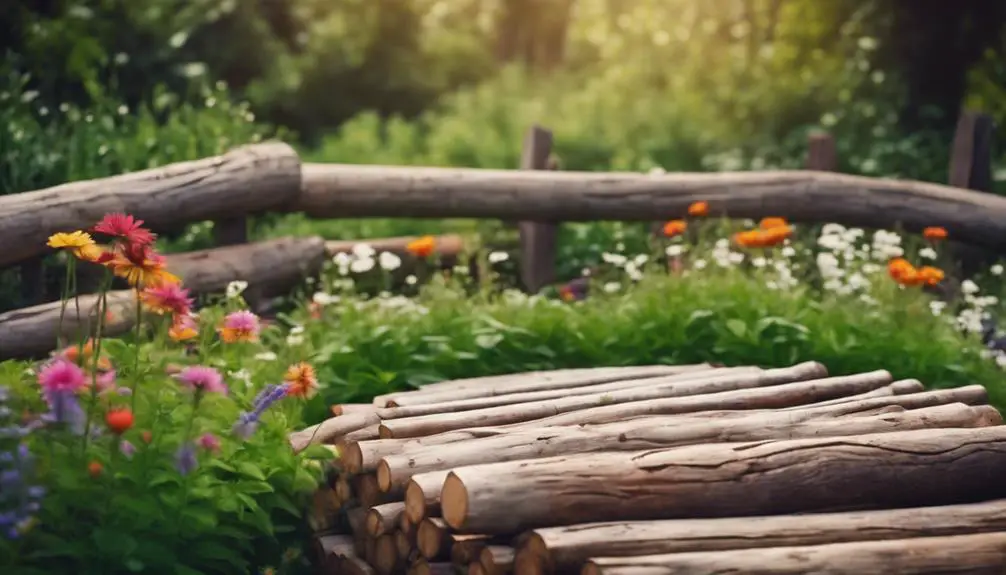
Six rustic wood planks, weathered to perfection, form the perimeter of your garden bed, blending seamlessly with the surrounding landscape. You've successfully infused your outdoor space with rustic charm, evoking a sense of natural, effortless beauty. The weathered beauty of the wood adds a layer of sophistication, while its distressed finish creates a sense of history and character.
To enhance the aesthetic, consider pairing the rustic wood with complementary materials, such as natural stone or moss-covered accents. This harmonious blend of textures and colors will create a visually striking contrast, drawing the eye towards your garden bed. Additionally, the wood's weathered patina will continue to evolve over time, developing a rich, muted tone that will only add to the bed's allure.
As you plant your chosen flora within the rustic wood boundaries, the entire arrangement will come alive, exuding a sense of organic, effortless style. Your garden bed will become a tranquil oasis, perfect for relaxation and contemplation. By incorporating rustic wood into your design, you've not only added a touch of elegance but also created a unique, Instagram-worthy focal point that will elevate your outdoor space to new heights.
Garden Bed Shapes and Styles
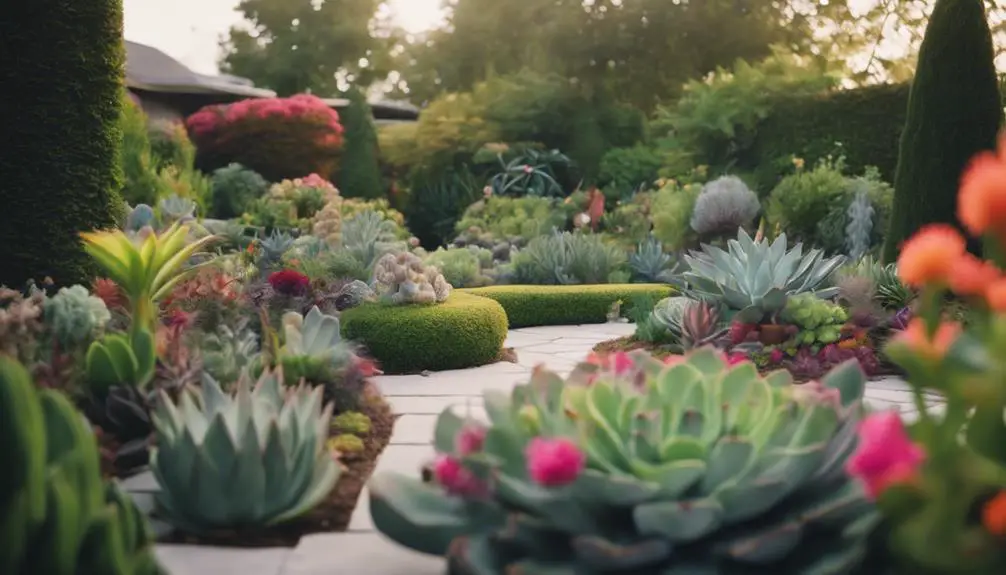
Beyond the rustic charm of traditional rectangular beds, a diverse array of shapes and styles awaits, from flowing curves to angular geometries, each capable of transforming your outdoor space.
You can create a whimsical ambiance with curved edges, softening the landscape and adding a touch of elegance. Alternatively, geometric patterns can inject a sense of modernity and sophistication, perfect for contemporary gardens.
Consider a circular bed, which can create a focal point in your yard, or a hexagonal design, which can add a touch of futuristic flair.
As you explore the world of garden bed shapes and styles, remember to balance form and function. Verify your chosen design complements the surrounding architecture and landscape features.
For example, a curved bed can subtly guide visitors through your garden, while a geometric pattern can create a visual connection between different areas.
Colorful Container Gardens

You can further amplify your outdoor space's visual appeal by incorporating vibrant container gardens that add a pop of color and texture to your garden beds.
By strategically placing containers, you can create a visually stunning display that draws the eye through your garden.
To achieve this, consider choosing containers that complement your garden's theme and style. For instance, if you have a modern garden, opt for sleek, angular containers in bold colors. If you have a whimsical garden, choose containers with a more organic, rustic feel.
When selecting plants, focus on Vibrant Blooms that will provide a burst of color throughout the growing season.
Consider mixing and matching different textures, such as smooth-leaved plants with those that have more tactile leaves.
Don't be afraid to experiment with different Container Themes, like a monochromatic scheme or a rainbow-inspired palette.
Vertical Garden Bed Options
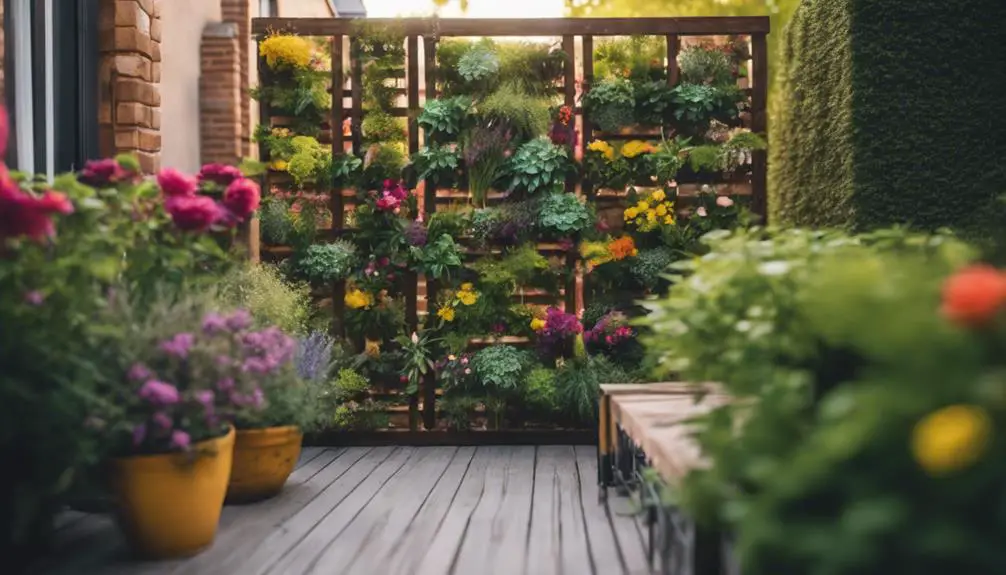
Vertical garden beds, also known as living walls or green walls, offer a space-saving solution for urban gardens, allowing you to cultivate a lush oasis even in the smallest of backyards.
By using wall planters or trellises, you can create a stunning display of plants that not only add visual appeal but also help purify the air and reduce urban noise pollution.
With a living wall, you can grow a variety of plants, from herbs and succulents to flowers and vines, in a compact and efficient manner.
When designing your vertical garden bed, consider the type of plants you want to use, the amount of sunlight they'll receive, and the watering system you'll need.
You can choose from a range of materials, such as modular planters, fabric pockets, or even DIY wooden frames, to create your living wall.
With the right design and care, your vertical garden bed can thrive and become a striking focal point in your outdoor space.
Frequently Asked Questions
How Often Should I Water My Garden Bed in Extreme Weather?
During extreme weather, you'll need to monitor weather patterns and soil moisture levels closely, watering when the top 2-3 inches of soil feel dry to the touch, and adjusting frequency based on temperature and precipitation.
Can I Use Pressure-Treated Wood for My Garden Bed Frame?
When building a frame, you'll want to reconsider using pressure-treated wood, as it can leach chemicals into the soil. Instead, opt for wood alternatives like naturally rot-resistant cedar or reclaimed wood, which enhance garden aesthetics while ensuring a toxin-free environment.
What Is the Ideal Garden Bed Depth for Root Vegetables?
When growing root vegetables, you'll want a bed depth that accommodates their root zone. Aim for 6-8 inches to guarantee proper soil aeration, allowing roots to breathe and thrive in a well-oxygenated environment.
How Do I Prevent Pests From Damaging My Garden Bed Plants?
When protecting your crops from pests, you'll want to deploy natural barriers like copper tape and fine-mesh row covers, while also leveraging companion planting strategies that confuse or repel pests, ensuring a thriving harvest.
Can I Grow Bulbs in a Raised Garden Bed With Poor Drainage?
When growing bulbs in a raised bed with poor drainage, you'll need to choose species tolerant of wet conditions, like canna or calla lilies, and guarantee soil aeration by incorporating organic matter and perlite to prevent waterlogging.
Conclusion
You've explored a range of garden bed ideas, from modern raised beds to whimsical cottage designs, and from small space solutions to edible and flower-filled borders.
Rustic wood and colorful container gardens offered additional inspiration, while vertical options and unique shapes and styles pushed the boundaries of traditional gardening.
With these diverse designs, you're equipped to create a outdoor space that's both functional and visually stunning, perfect for relaxation, entertainment, or simply enjoying nature's beauty.


